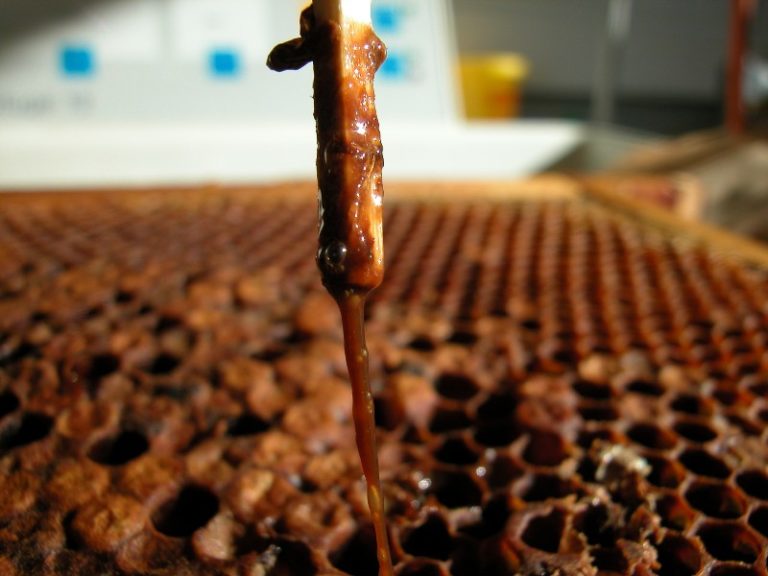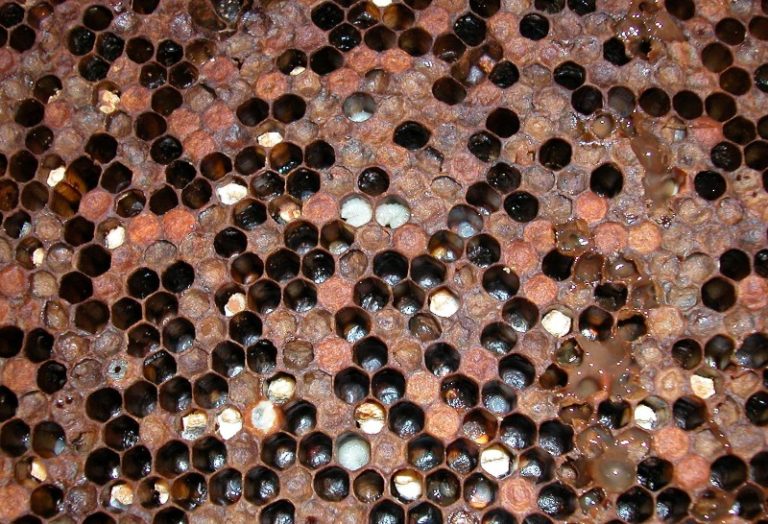American foulbrood (AFB) is the most contagious, serious bacterial disease of honeybee brood caused by the bacterium Paenibacillus, which is a virulent spore-forming organism. This disease can appear and spread quickly throughout a colony. The spores are the infective stage of the disease – infection begins when food contaminated with spores are fed to larvae by the nurse bees. Once in the gut of the larva the spores will germinate; the bacteria then moves into the larval tissues, where they multiply enormously. Infected larvae normally die after the cell is sealed and millions of infective spores form in the larval remains. As these spores remain viable for many years and are very resistant to extremes of hot and cold and to many disinfectants in the UK, the only current treatment is destruction by burning the hive.

Signs of American foulbrood include:
- wax cappings becoming sunken and perforated
- cappings becoming moist or greasy looking and changing colour
- when looking at the bottom of cells, AFB scales, which resemble a proboscis tongue, can be seen in comb cells
- an unpleasant smell
- when remains are drawn out, the mucus may be ropey
Image Courtesy The Animal and Plant Health Agency (APHA), Crown Copyright

If you suspect your colony has American foulbrood you must:
- contact the NBU office or your local bee inspector immediately
- close the hive
- disinfect beekeeping equipment
- not remove any colonies, equipment or honey from the site until the disease, if confirmed, has been controlled
Image Courtesy The Animal and Plant Health Agency (APHA), Crown Copyright
